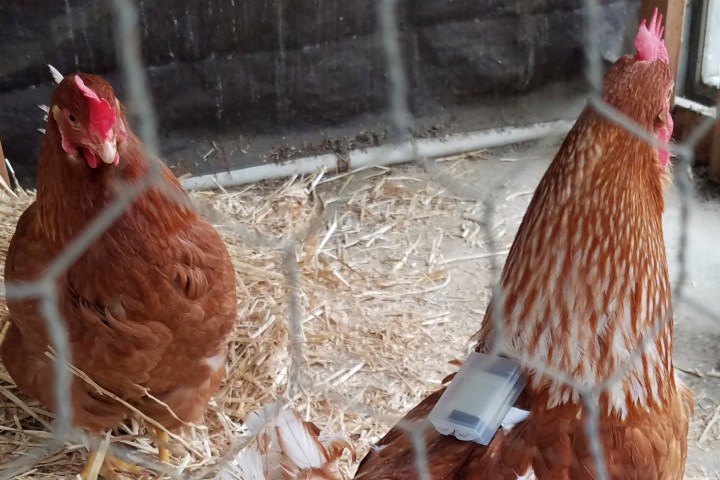
There was a time, not that long ago, when wearable devices were only the province of humans. How far we’ve come since then! Here in 2018, there are high-tech wearables available, regardless of whether you’re a tiny grasshopper or a significantly larger animal like a cow.
Sitting neatly between these two size extremes is a new project coming out of the University of California, Riverside. Researchers there have developed a sort of “Fitbit for chickens.” It’s essentially a miniature backpack that’s capable of analyzing behavior — such as revealing if a chicken is pecking, preening, or dust-bathing — with an accuracy level of more than 85 percent. This is thanks to an algorithm trained on data gathered during the study. Crucially, the algorithm can also inform when something goes wrong, such as an outbreak of blood-drinking parasites.
“We are interested in studying chicken behaviors, but traditional behavior studies required the researchers to make in-person observations or watch hours of video,” Amy Murillo, one of the researchers on the project, told Digital Trends. “Both techniques limit the number of animals that can be observed and the total observation time. In our study, we used sensors with 3-axis accelerometers to track chicken movement. These sensors are worn by chickens and can collect data for long periods of time — continuously for up to two weeks on one battery charge.”
Alireza Abdoli, who also worked on the project, notes that the plan is not that every chicken is outfitted with its own sensor. While this could provide useful information, it would also be highly impractical. Instead, the idea is to use it as a tool to gather information on chicken health, and then apply those lessons to the brood at large.
“We are interested in knowing how ectoparasite infestations — mites or lice — impact chicken behaviors,” Murillo said. “So our next step is to use these sensors on birds with or without infestations to see if there are detectable behavioral differences. If significant behavioral differences are found, then it may be possible one day for commercial producers to use behavioral changes in their flocks to assess ectoparasite infestations. This may be especially useful for detecting early mite or louse infestations, or for assessing the success of a mite [and] louse control program on poultry farms.”
Longer term, she said the technology could be commercialized to help farmers assess the health of their chicken broods. Doing this would save considerable time, since at present farmers must manually check their chickens one a time to seek out mites. However, this commercialization is still a way off.
“Our next step is to evaluate chicken behavioral differences using these sensors on healthy versus unhealthy birds,” Murillo said.
Editors' Recommendations
- Fitbit cleared to launch new feature that could save lives
- Glowing OLED tattoos could be used for fashion, health care, and more
- Fitbit wants to find out if wearables can detect coronavirus
- Fitbit Versa 2 adds Alexa and Spotify control, debuts Premium coaching program


